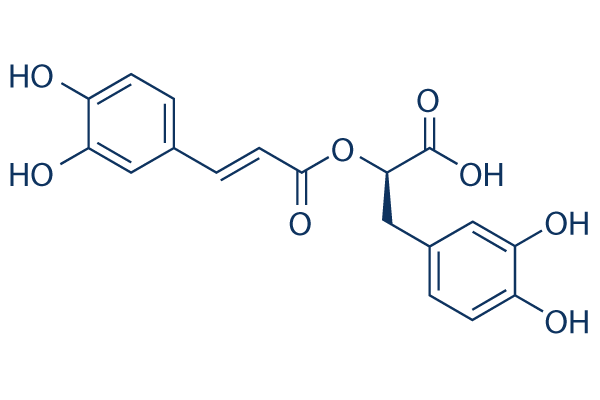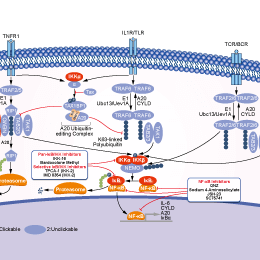
- 阻害剤
- 研究分野別
- PI3K/Akt/mTOR
- Epigenetics
- Methylation
- Immunology & Inflammation
- Protein Tyrosine Kinase
- Angiogenesis
- Apoptosis
- Autophagy
- ER stress & UPR
- JAK/STAT
- MAPK
- Cytoskeletal Signaling
- Cell Cycle
- TGF-beta/Smad
- 化合物ライブラリー
- Popular Compound Libraries
- Customize Library
- Clinical and FDA-approved Related
- Bioactive Compound Libraries
- Inhibitor Related
- Natural Product Related
- Metabolism Related
- Cell Death Related
- By Signaling Pathway
- By Disease
- Anti-infection and Antiviral Related
- Neuronal and Immunology Related
- Fragment and Covalent Related
- FDA-approved Drug Library
- FDA-approved & Passed Phase I Drug Library
- Preclinical/Clinical Compound Library
- Bioactive Compound Library-I
- Bioactive Compound Library-II
- Kinase Inhibitor Library
- Express-Pick Library
- Natural Product Library
- Human Endogenous Metabolite Compound Library
- Alkaloid Compound LibraryNew
- Angiogenesis Related compound Library
- Anti-Aging Compound Library
- Anti-alzheimer Disease Compound Library
- Antibiotics compound Library
- Anti-cancer Compound Library
- Anti-cancer Compound Library-Ⅱ
- Anti-cancer Metabolism Compound Library
- Anti-Cardiovascular Disease Compound Library
- Anti-diabetic Compound Library
- Anti-infection Compound Library
- Antioxidant Compound Library
- Anti-parasitic Compound Library
- Antiviral Compound Library
- Apoptosis Compound Library
- Autophagy Compound Library
- Calcium Channel Blocker LibraryNew
- Cambridge Cancer Compound Library
- Carbohydrate Metabolism Compound LibraryNew
- Cell Cycle compound library
- CNS-Penetrant Compound Library
- Covalent Inhibitor Library
- Cytokine Inhibitor LibraryNew
- Cytoskeletal Signaling Pathway Compound Library
- DNA Damage/DNA Repair compound Library
- Drug-like Compound Library
- Endoplasmic Reticulum Stress Compound Library
- Epigenetics Compound Library
- Exosome Secretion Related Compound LibraryNew
- FDA-approved Anticancer Drug LibraryNew
- Ferroptosis Compound Library
- Flavonoid Compound Library
- Fragment Library
- Glutamine Metabolism Compound Library
- Glycolysis Compound Library
- GPCR Compound Library
- Gut Microbial Metabolite Library
- HIF-1 Signaling Pathway Compound Library
- Highly Selective Inhibitor Library
- Histone modification compound library
- HTS Library for Drug Discovery
- Human Hormone Related Compound LibraryNew
- Human Transcription Factor Compound LibraryNew
- Immunology/Inflammation Compound Library
- Inhibitor Library
- Ion Channel Ligand Library
- JAK/STAT compound library
- Lipid Metabolism Compound LibraryNew
- Macrocyclic Compound Library
- MAPK Inhibitor Library
- Medicine Food Homology Compound Library
- Metabolism Compound Library
- Methylation Compound Library
- Mouse Metabolite Compound LibraryNew
- Natural Organic Compound Library
- Neuronal Signaling Compound Library
- NF-κB Signaling Compound Library
- Nucleoside Analogue Library
- Obesity Compound Library
- Oxidative Stress Compound LibraryNew
- Phenotypic Screening Library
- PI3K/Akt Inhibitor Library
- Protease Inhibitor Library
- Protein-protein Interaction Inhibitor Library
- Pyroptosis Compound Library
- Small Molecule Immuno-Oncology Compound Library
- Mitochondria-Targeted Compound LibraryNew
- Stem Cell Differentiation Compound LibraryNew
- Stem Cell Signaling Compound Library
- Natural Phenol Compound LibraryNew
- Natural Terpenoid Compound LibraryNew
- TGF-beta/Smad compound library
- Traditional Chinese Medicine Library
- Tyrosine Kinase Inhibitor Library
- Ubiquitination Compound Library
-
Cherry Picking
You can personalize your library with chemicals from within Selleck's inventory. Build the right library for your research endeavors by choosing from compounds in all of our available libraries.
Please contact us at info@selleck.co.jp to customize your library.
You could select:
- 抗体
- 新製品
- お問い合わせ
Rosmarinic acid
別名:Rosemary acid
Rosmarinic acid (RA, Rosemary acid) is a naturally occurring hydroxylated compound. It has the ability to block complement fixation, inhibit lipoxygenase and cyclooxygenase activity and inhibit the expression of CCL11 and CCR3 by suppressing the IKK-β activity in NF-κB activation signaling.

CAS No. 20283-92-5
文献中Selleckの製品使用例(3)
製品安全説明書
現在のバッチを見る:
純度:
99.88%
99.88
Rosmarinic acid関連製品
シグナル伝達経路
IκB/IKK阻害剤の選択性比較
生物活性
| 製品説明 | Rosmarinic acid (RA, Rosemary acid) is a naturally occurring hydroxylated compound. It has the ability to block complement fixation, inhibit lipoxygenase and cyclooxygenase activity and inhibit the expression of CCL11 and CCR3 by suppressing the IKK-β activity in NF-κB activation signaling. | ||
|---|---|---|---|
| Targets |
|
| In Vitro | ||||
| In vitro | RA exerts a significant cytoprotective effect by scavenging intracellular ROS induced by UVB. This compound also attenuates UVB-induced oxidative macromolecular damage, including protein carbonyl content, DNA strand breaks, and the level of 8-isoprostane. Furthermore, it increases the expression and activity of superoxide dismutase, catalase, heme oxygenase-1, and their transcription factor Nrf2, which are decreased by UVB radiation. RA treatment recovers the protein expression levels of Nrf2 decreased by UVB exposure, and results in the translocation of Nrf2 protein from the cytosol into the nucleus. It may protect cellular environments from free-radical damage and thereby, enhance the cellular antioxidant defense system[1]. This acid inhibits TNF-α-induced phosphorylation and degradation of IκB-α, as well as nuclear translocation of NF-κB heterodimer induced by TNF-α. It downregulates the expression of CCL11 and CCR3 via the inhibition of NF-κB activation signaling. This chemical inhibits the Ca2+-dependent pathways of TCR-mediated signaling by inhibiting PLC-γ1 and Itk activities[2]. | |||
|---|---|---|---|---|
| 細胞実験 | 細胞株 | HaCaT cells | ||
| 濃度 | 0.625, 1.25, 2.5, or 5 μM | |||
| 反応時間 | 48 h | |||
| 実験の流れ | Cells are treated with RA (0.625, 1.25, 2.5, or 5 μM) and exposed to UVB radiation 1 h later. They are then incubated at 37°C for 48 h. At this time, MTT is added to each well to obtain a total reaction volume of 200 μl. After 4 h incubation, the supernatant is removed by aspiration. The formazan crystals in each well are dissolved in dimethyl sulfoxide (DMSO; 150 μl), and the absorbance at 540 nm is measured on a scanning multi-well spectrophotometer. |
|||
| In Vivo | ||
| In Vivo | RA improves histological and serum markers of liver damage and significantly ameliorates oxidative/nitrosative stress and inflammatory response in liver tissue. Additionally, this compound prevents transforming growth factor-beta1 (TGF-b1) and alpha-smooth muscle actin (a-SMA) expression, suggesting suppression of profibrotic response. It significantly inhibits the CCl4-induced apoptosis, which is evident from decreased cleavage of caspase-3. The hepatoprotective activity of this chemical coincides with enhanced NF-E2-related factor 2 (Nrf2) and hemeoxygenase-1 (HO-1) expression. It acts as a natural inducer of endogenous cellular antioxidant defense via activation of the Nrf2/HO-1 pathway[3]. | |
|---|---|---|
| 動物実験 | 動物モデル | Male BALB/cN mice |
| 投与量 | 10, 25 and 50 mg/kg | |
| 投与経路 | by gavage | |
|
化学情報
| 分子量 | 360.31 | 化学式 | C18H16O8 |
| CAS No. | 20283-92-5 | SDF | Download Rosmarinic acid SDFをダウンロードする |
| Smiles | C1=CC(=C(C=C1CC(C(=O)O)OC(=O)C=CC2=CC(=C(C=C2)O)O)O)O | ||
| 保管 | |||
|
In vitro |
DMSO : 72 mg/mL ( (199.82 mM); 吸湿したDMSOは溶解度を減少させます。新しいDMSOをご使用ください。) Water : 18 mg/mL Ethanol : 18 mg/mL |
モル濃度計算器 |
|
in vivo Add solvents to the product individually and in order. |
投与溶液組成計算機 | |||||
実験計算
投与溶液組成計算機(クリア溶液)
ステップ1:実験データを入力してください。(実験操作によるロスを考慮し、動物数を1匹分多くして計算・調製することを推奨します)
mg/kg
g
μL
匹
ステップ2:投与溶媒の組成を入力してください。(ロット毎に適した溶解組成が異なる場合があります。詳細については弊社までお問い合わせください)
% DMSO
%
% Tween 80
% ddH2O
%DMSO
%
計算結果:
投与溶媒濃度: mg/ml;
DMSOストック溶液調製方法: mg 試薬を μL DMSOに溶解する(濃度 mg/mL, 注:濃度が当該ロットのDMSO溶解度を超える場合はご連絡ください。 )
投与溶媒調製方法:Take μL DMSOストック溶液に μL PEG300,を加え、完全溶解後μL Tween 80,を加えて完全溶解させた後 μL ddH2O,を加え完全に溶解させます。
投与溶媒調製方法:μL DMSOストック溶液に μL Corn oil,を加え、完全溶解。
注意:1.ストック溶液に沈殿、混濁などがないことをご確認ください;
2.順番通りに溶剤を加えてください。次のステップに進む前に溶液に沈殿、混濁などがないことを確認してから加えてください。ボルテックス、ソニケーション、水浴加熱など物理的な方法で溶解を早めることは可能です。
技術サポート
ストックの作り方、阻害剤の保管方法、細胞実験や動物実験の際に注意すべき点など、製品を取扱う時に問い合わせが多かった質問に対しては取扱説明書でお答えしています。
他に質問がある場合は、お気軽にお問い合わせください。
* 必須

